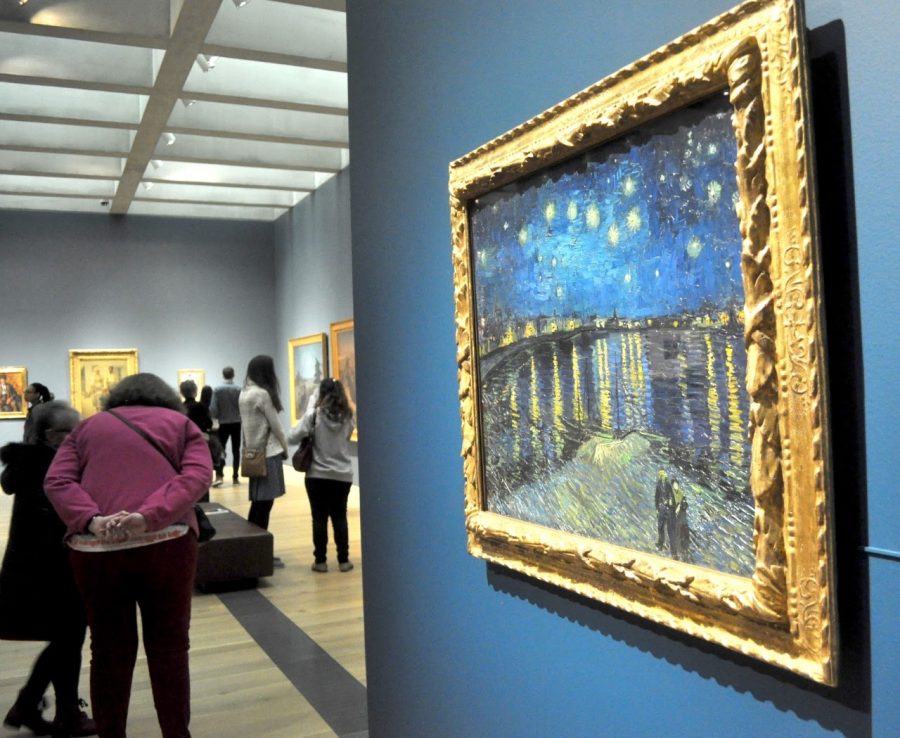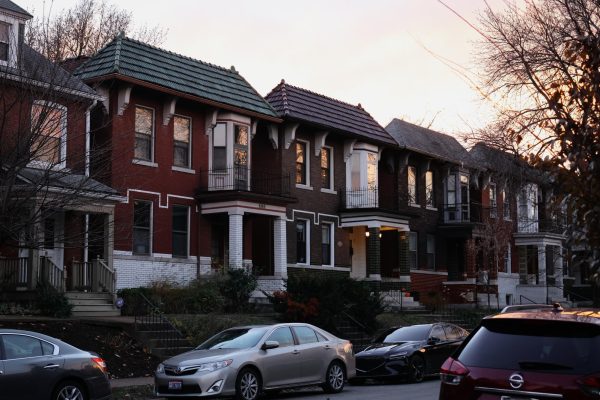Van Gogh’s Inspiration Comes to St. Louis
Vincent van Gogh’s “Starry Night Over the Rhône” and Claude Monet’s “Haystacks” series are among some of the most recognizable and lauded works of art in the history of mankind. The axium “standing on the shoulders of giants” certainly rings true for these pieces.
Jean-François Millet deeply inspired artists with his subject matter and composition. Van Gogh saw him as a mentor and copied 20 of Millet’s pieces as practice, refocusing them to be, as he called it, “translations in color.” Millet, van Gogh and Monet, along with countless others, can be found for a limited time at the Saint Louis Art Museum.
The Saint Louis Art Museum is in the heart of Forest Park, not far from Washington University St. Louis, and is home to every time period and genre of art you can think of. Whether you are looking for classical paintings, impressionistic or modern art, or even sculptures and cultural objects, the Saint Louis Art Museum is the place to be. This wonderful asset to St. Louis is visited by over a half million people every year and is free to the public. Various exhibitions are shown in a separate part of the museum for an additional fee but are free to the public every Friday.
The current exhibition featured in the museum, “Millet and Modern Art: From Van Gogh to Dalí,” was enlightening and thought provoking. Until May 17, the works of 19th-century artist Jean-François Millet will be on exhibit. Millet, who was an exceedingly talented artist, inspired countless iconic works from Impressionism to Surrealism—most notably, the works of van Gogh, Claude Monet and Salvador Dalí.
These 19th and 20th-century artists, along with many others, can be seen side by side with Millet’s paintings and drawings. Millet uniquely expresses peasant life in rural France with his drawings, oil paintings and pastel work. What made Millet’s work revolutionary was not only his subject matter, but his use of defiant brush strokes, his composition in landscapes and his fearlessness to leave out detail. It was especially divergent due to its departure from the realism of Romanticism and Neoclassicism, where artists focused on almost photo-realistic scenes often inspired from mythology and history rather than real life.
The basic layout of the exhibit groups subject matter of various artists with Millet, allowing you to see his strong influence on some of the most famous artists along with some lesser-known but incredibly talented artists. This influence can be clearly seen while journeying through the collection of artwork, making for an eye-openingly educational and enjoyable experience. Millet was radical for his “intelligent sacrifice of details,” as art critic Theophile Gautier once said. Impressionist paintings are often charged with the heavy responsibility of capturing reality yet being emotional. Millet’s paintings accomplish this but in a more subdued way, with delicate changes of color.
The landscapes at the exhibition are by far the main event. The viewer is drifted away to the countryside at different points in the day and throughout the seasons. One caption at the exhibit said it best: “No painter, in any school has pushed further the study and the art of foregrounds.” Beautiful fields, cliffs and farms take up almost the entirety of Milet’s compositions. This was a game-changer for artists and allowed for the land to become the primary focus. Millet’s “Starry Night” painting transports the viewer to a quiet field in the rural countryside where one can see stars begin to glisen. While not as flashy and colorful as van Gogh’s interpretation, Millet captures the beauty of the sky in a subtle and effective manner.
Whether you are just looking to see one of van Gogh’s starry night paintings that came here all the way from Musée d’Orsay in Paris or you want to see the artist who greatly inspired him, the “Millet and Modern Art” exhibit at the Saint Louis Art Museum is the place to be.
Your donation will support the student journalists of Saint Louis University. Your contribution will help us cover our annual website hosting costs.












